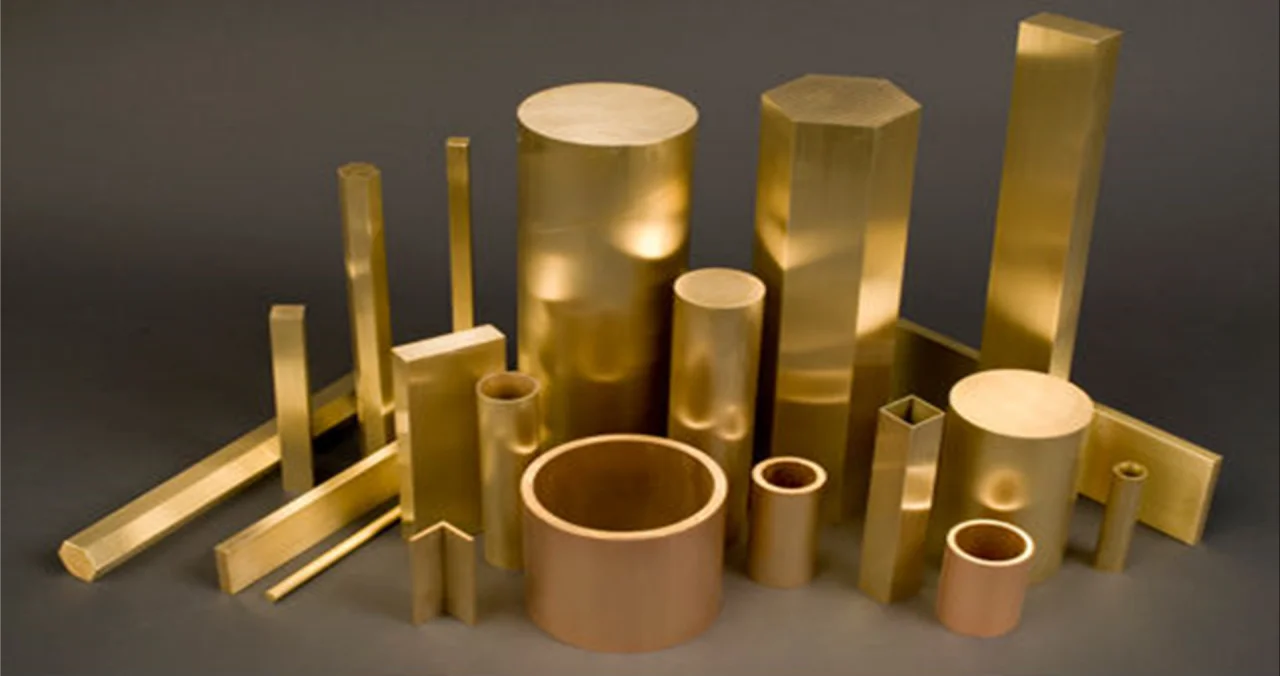Aluminum bronze is a versatile alloy that combines the properties of aluminum and bronze to create a material with excellent corrosion resistance, high strength, and good thermal and electrical conductivity. This alloy typically contains around 5-12% aluminum and is primarily composed of copper. The addition of aluminum enhances the alloy’s strength and corrosion resistance while maintaining bronze’s desirable characteristics, such as its machinability and wear resistance. Aluminum bronze alloys find applications in various industries, including marine, aerospace, automotive, and manufacturing.
One of the key advantages of aluminum bronze is its resistance to corrosion in aggressive environments, such as seawater and chemical solutions. This makes it an ideal choice for marine applications like propellers, pumps, and valves, where exposure to saltwater is common. Additionally, its high tensile strength and toughness make it suitable for heavy-duty mechanical components and bearings. Its excellent electrical and thermal conductivity also make it valuable in electrical connectors and heat exchangers. Overall, aluminum bronze is prized for its combination of mechanical properties and corrosion resistance, making it a valuable material in numerous industrial and engineering applications.
The specific properties of aluminum bronze can vary depending on the composition and heat treatment, allowing engineers to tailor the alloy to meet the requirements of a particular application. Its ability to withstand harsh conditions, resist wear and corrosion, and maintain mechanical integrity has established aluminum bronze as a vital material in many critical industries, where durability and performance are paramount.
The outstanding aluminum bronze properties, including its corrosion resistance, high strength, and excellent conductivity, make it a versatile alloy for various industries. Engineers can customize its specific attributes through composition and heat treatment, ensuring it meets the exact requirements of their applications. In summary, aluminum bronze is a valued material known for its exceptional properties.
1. A Remarkable Material
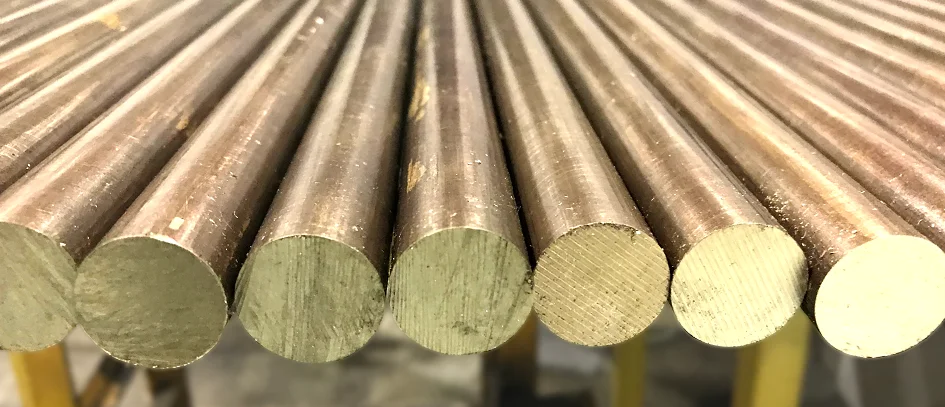
A Remarkable Material
Aluminum bronze is undeniably a remarkable material that has earned its place as a valuable alloy in the world of engineering and manufacturing. Combining the strength and durability of bronze with the corrosion-resistant properties of aluminum, this alloy exhibits a unique blend of characteristics that makes it a standout choice for a wide range of applications. Its versatility is truly remarkable, allowing it to excel in environments where other materials might falter.
One of the most notable attributes of aluminum bronze is its exceptional resistance to corrosion, particularly in aggressive settings like marine or chemical industries. This quality makes it an invaluable material for components exposed to harsh conditions, such as ship propellers, heat exchangers, and valves. Furthermore, its excellent mechanical properties, including high tensile strength and wear resistance, contribute to its reputation as a material of choice for heavy-duty applications. Its ability to conduct both electricity and heat efficiently extends its utility to electrical connectors and other specialized systems where such properties are crucial.
In essence, aluminum bronze stands as a testament to the ingenuity of material science, offering a solution that bridges the gap between the strength and durability required for challenging applications and the need for resistance to corrosion and wear. Its remarkable properties have solidified its role as a vital material in numerous industries, contributing to the development of durable and reliable products across various sectors.
2.Exceptional Corrosion Resistance
The exceptional corrosion resistance of aluminum bronze is a defining characteristic that sets it apart from many other materials in the realm of engineering and metallurgy. This quality makes it an invaluable choice for applications where exposure to corrosive environments is a constant challenge. Aluminum bronze is known for its resistance to corrosion from various sources, including seawater, chemicals, and even atmospheric conditions, which can lead to the degradation of many other metals.
One of the primary reasons for aluminum bronze’s remarkable corrosion resistance is its aluminum content, typically ranging from 5% to 12% in the alloy. Aluminum forms a protective oxide layer on the surface of the material, which acts as a barrier against further corrosion. This oxide layer is stable and self-renewing, providing long-term protection even in harsh conditions. Consequently, aluminum bronze components are commonly used in marine applications, where prolonged exposure to saltwater could swiftly deteriorate other materials.
The ability of aluminum bronze to withstand corrosion while maintaining its structural integrity makes it a preferred choice for critical components such as marine propellers, pumps, and valves. Furthermore, it is frequently employed in chemical processing equipment, where resistance to corrosive chemicals is imperative. Its remarkable ability to resist degradation due to corrosion ensures that aluminum bronze remains a valuable material in industries where durability and longevity are paramount concerns.
3.High Strength and Durability
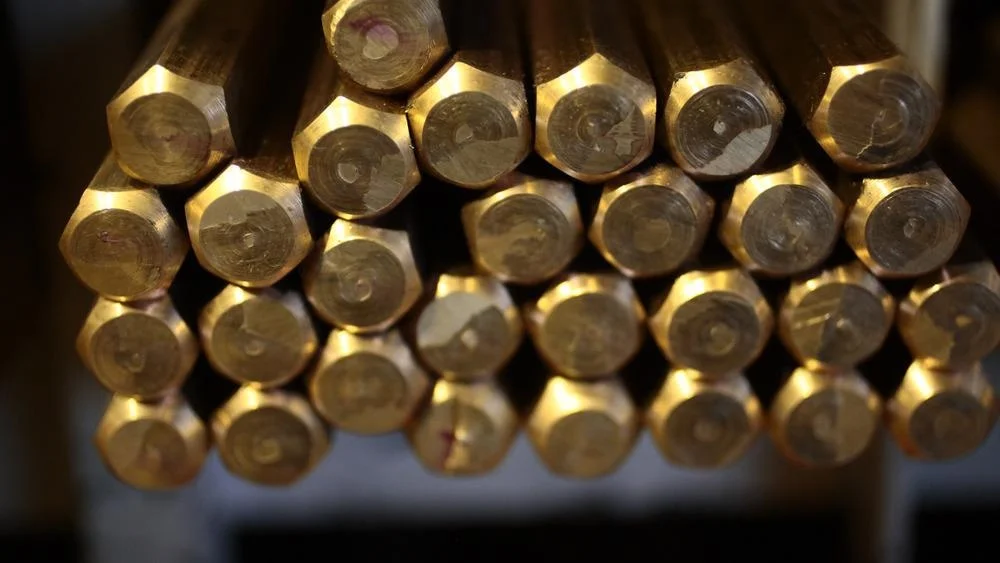
High Strength and Durability
High strength and durability are key attributes that make aluminum bronze a sought-after material in various industrial applications. This alloy combines the robustness of bronze with the added strength of aluminum, creating a material that can withstand significant mechanical stress and wear while maintaining its structural integrity over time.
The strength of aluminum bronze is primarily attributed to its copper-aluminum composition. Copper provides the foundational strength and toughness, while the addition of aluminum enhances these properties further. This combination results in an alloy that can handle heavy loads and resist deformation under pressure, making it ideal for applications where mechanical strength is crucial. This strength is particularly valuable in marine environments, where components like propellers and valves are subjected to substantial forces, as well as in manufacturing and aerospace, where precision and durability are paramount.
In addition to its high strength, aluminum bronze exhibits excellent wear resistance. Its composition and microstructure allow it to endure abrasive conditions, making it a suitable choice for components like bearings, gears, and bushings. Its resistance to wear and fatigue ensures a longer operational life for equipment and machinery, reducing maintenance costs and downtime. Overall, the combination of high strength and durability makes aluminum bronze a reliable material in a wide range of industries, contributing to the longevity and reliability of various engineering applications.
4.Excellent Heat and Wear Resistance
One of the outstanding attributes of aluminum bronze is its excellent heat and wear resistance, which makes it an invaluable material in applications where components are subjected to high temperatures and abrasive conditions. This alloy’s unique combination of properties allows it to maintain its structural integrity and performance even in challenging environments.
Aluminum bronze’s exceptional heat resistance is primarily due to its high melting point and thermal stability. This makes it an ideal choice for applications involving high-temperature processes, such as foundry equipment, molds, and casting tools. The alloy’s ability to retain its mechanical properties at elevated temperatures ensures that it can withstand the thermal stresses and maintain its structural integrity in demanding industrial settings.
Furthermore, aluminum bronze exhibits remarkable wear resistance, which is crucial in applications where components experience friction and abrasion. Its composition, which includes both copper and aluminum, results in a microstructure that is resistant to wear and galling. This makes it particularly well-suited for use in gears, bushings, bearings, and other mechanical components that require long-lasting performance in environments with high levels of friction. Aluminum bronze’s wear resistance not only extends the lifespan of equipment but also reduces maintenance requirements, ultimately leading to cost savings in various industries. In summary, the combination of excellent heat and wear resistance positions aluminum bronze as a superior material for applications where durability and performance are critical.
5.Versatile Machinability and Formability
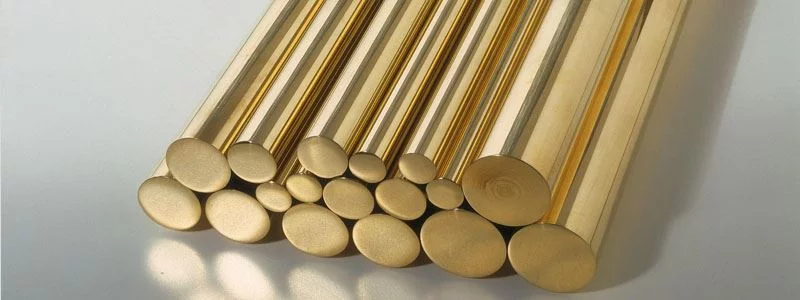
Versatile Machinability and Formability
Aluminum bronze is celebrated not only for its impressive mechanical properties but also for its versatile machinability and formability. These characteristics make it a favored choice for manufacturers and engineers seeking a material that can be readily shaped, fabricated, and customized to suit their specific needs.
One of the key advantages of aluminum bronze in terms of machinability is its ability to be cut, drilled, milled, and turned with relative ease. Its composition, which includes copper, aluminum, and sometimes other elements like iron and nickel, results in a material that exhibits good chip control and reduced tool wear during machining. This means that manufacturers can efficiently produce intricate parts and components without excessive tool wear, leading to cost-effective production processes.
In addition to its machinability, aluminum bronze is also highly formable, allowing it to be shaped into a wide variety of configurations. This makes it well-suited for applications that require complex geometries or customized designs. Whether it’s through casting, forging, or other forming processes, aluminum bronze can be tailored to meet the specific requirements of a given project. This versatility in both machining and formability makes aluminum bronze a material of choice in industries ranging from aerospace and automotive to marine and manufacturing, where precision and customization are essential considerations.
6.Non-Sparking Properties for Safety
One remarkable property of aluminum bronze that sets it apart from many other materials is its non-sparking nature. This characteristic makes it an exceptional choice for applications where safety is paramount, particularly in environments where the risk of igniting flammable gases or materials exists.
The non-sparking property of aluminum bronze is primarily a result of its composition. This alloy is predominantly composed of copper, with the addition of aluminum, which minimizes the risk of sparks or sparks that could potentially ignite explosive or flammable atmospheres. This makes it a crucial material in industries where such hazards are prevalent, such as petrochemical plants, refineries, and mining operations. In these environments, tools and equipment made from aluminum bronze are used to reduce the risk of accidental fires and explosions.
Beyond its non-sparking properties, aluminum bronze also retains its other advantageous characteristics, including corrosion resistance, strength, and wear resistance, making it a well-rounded choice for applications where safety is of utmost importance. This unique combination of properties has solidified aluminum bronze as a trusted material for critical safety-related components, ensuring the protection of personnel and equipment in hazardous settings.
7.Superior Electrical and Thermal Conductivity
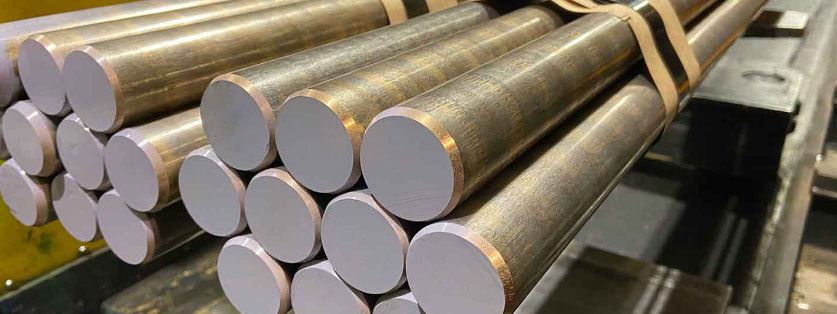
Superior Electrical and Thermal Conductivity
Aluminum bronze is recognized for its superior electrical and thermal conductivity, making it a valuable material in various engineering applications where efficient heat and electricity transfer is essential.
In terms of electrical conductivity, aluminum bronze exhibits conductivity levels that are close to pure copper. This makes it an excellent choice for electrical connectors, switchgear components, and other applications where low electrical resistance and efficient current flow are crucial. Its ability to conduct electricity effectively helps minimize energy losses and ensures the reliable transmission of electrical signals, making it a preferred material in the electrical and electronics industries.
Additionally, aluminum bronze possesses commendable thermal conductivity properties. Its ability to efficiently transfer heat makes it suitable for use in heat exchangers, cooling systems, and other applications that require effective thermal management. In industrial settings, the alloy’s thermal conductivity helps dissipate heat efficiently, preventing overheating and ensuring the proper functioning of machinery and equipment.
The combination of superior electrical and thermal conductivity sets aluminum bronze apart as a versatile material that can fulfill multiple roles in various industries. Its ability to conduct both electricity and heat effectively contributes to its widespread use in applications where efficient energy transfer is critical for performance and safety.
8.Low Friction Coefficients
Aluminum bronze is notable for its low friction coefficients, which make it an excellent choice for applications where reduced friction and wear are essential considerations. This property is particularly valuable in industries where components are subjected to constant movement and require minimal energy loss due to friction.
The low friction coefficients of aluminum bronze stem from its composition and microstructure. The alloy typically contains copper, aluminum, and sometimes other elements like iron and nickel. These elements work together to create a material with a fine-grained and homogeneous structure that is resistant to galling and abrasion. As a result, aluminum bronze exhibits excellent tribological properties, making it suitable for use in bearings, bushings, gears, and sliding components.
In applications where lubrication is challenging or limited, aluminum bronze’s low friction coefficients offer a distinct advantage. It reduces the need for constant lubrication and maintenance, leading to cost savings and improved efficiency. Additionally, its ability to maintain low friction even in demanding environments, such as those exposed to abrasive materials or high loads, makes it a preferred choice for critical components in various industries, including aerospace, automotive, and manufacturing. Overall, the low friction coefficients of aluminum bronze contribute to its reputation as a material that enhances performance and extends the lifespan of mechanical systems and equipment.
9. Aluminum Bronze in Marine Applications
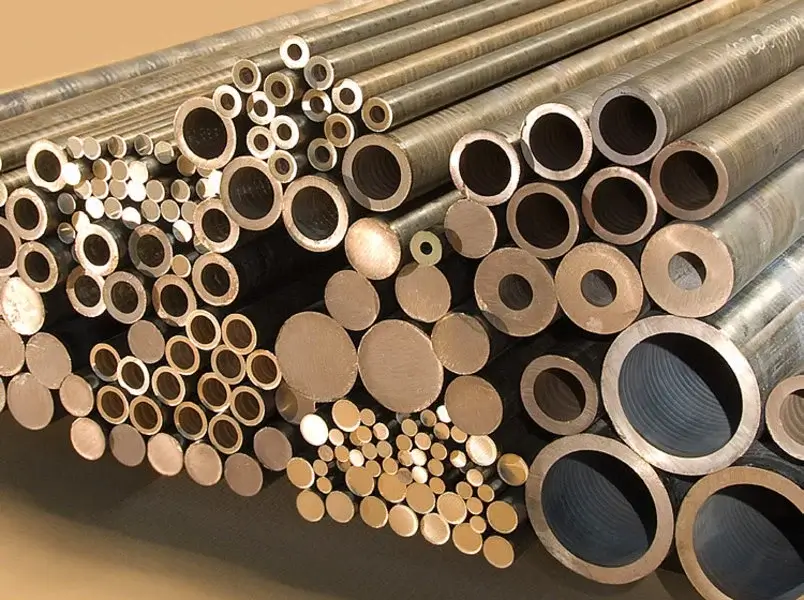
Aluminum Bronze in Marine Applications
Aluminum bronze is a material highly regarded for its performance and durability in marine applications. Its exceptional resistance to corrosion, especially in saltwater environments, makes it a top choice for various marine components and equipment. Here, we’ll explore why aluminum bronze is a preferred material in the maritime industry.
One of the primary reasons aluminum bronze is favored in marine applications is its outstanding corrosion resistance. In the harsh conditions of seawater, where other materials may quickly deteriorate, aluminum bronze remains resilient. The protective oxide layer that forms on its surface, thanks to its aluminum content, acts as a shield against corrosive elements. This property is especially crucial for components like ship propellers, valves, and pumps, which are continually exposed to saltwater. The extended lifespan of these parts, due to the corrosion-resistant nature of aluminum bronze, significantly reduces maintenance costs and downtime in the maritime sector.
Furthermore, aluminum bronze’s exceptional mechanical properties, including high tensile strength and wear resistance, make it ideal for heavy-duty marine applications. It can withstand the rigorous demands of marine equipment, ensuring reliable performance over extended periods. Beyond this, its low friction coefficients contribute to efficient operation, and its non-sparking properties enhance safety, making it a versatile and trusted choice in shipbuilding and marine engineering. Overall, the combination of corrosion resistance, mechanical strength, and longevity solidify aluminum bronze as an essential material in the maritime industry, where reliability and performance are paramount.
10.Sustainability and Recyclability
Sustainability and recyclability are critical considerations in today’s materials selection processes, and aluminum bronze holds its own in these aspects. While primarily valued for its mechanical and corrosion-resistant properties, aluminum bronze also offers sustainability benefits that make it an environmentally responsible choice.
One of the key sustainability advantages of aluminum bronze is its long lifespan. Components and products made from this alloy are known for their durability and resistance to wear and corrosion. This longevity not only reduces the frequency of replacements but also minimizes the resources and energy required for manufacturing, transportation, and disposal. In essence, aluminum bronze contributes to resource conservation and reduced waste in the long term.
Furthermore, aluminum bronze is a recyclable material. When components made from this alloy reach the end of their service life, they can be melted down and reused to create new products or parts. This recyclability reduces the need for extracting and processing virgin materials, conserving natural resources and energy. The ability to recycle aluminum bronze aligns with the principles of circular economy and sustainable material use, making it a responsible choice for industries striving to minimize their environmental footprint.
The sustainability and recyclability of aluminum bronze, combined with its robust mechanical properties, corrosion resistance, and versatility, make it an attractive option for industries looking to balance performance with environmental responsibility. Its contribution to resource conservation and reduced waste aligns well with the growing focus on sustainable materials and practices in today’s global economy.
REFERENCES:
Chen, F., Chen, S., Dong, X. H., Li, C. Y., Hong, X. T., & Zhang, X. P. (2015). Size effects on tensile strength of aluminum–bronze alloy at room temperature. Materials & Design, 85, 778-784.
Qin, Z., Xia, D. H., Zhang, Y., Wu, Z., Liu, L., Lv, Y., … & Hu, W. (2020). Microstructure modification and improving corrosion resistance of laser surface quenched nickel–aluminum bronze alloy. Corrosion Science, 174, 108744.

